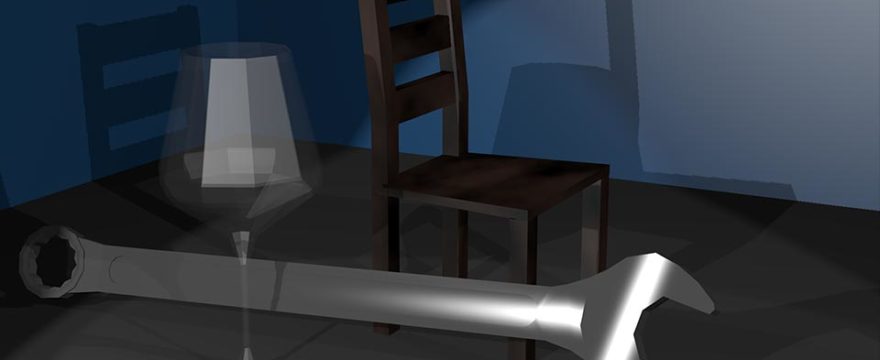DaVinci Resolve and Fusion allow you to create simple 3D scenes directly in Fusion. Create your own Shape3D or import models from 3D applications. In both cases, a good understanding of materials helps you create great compositions.
If you are not a 3D artist some of the terminology and concepts may sound technical and intimidating. But it is easier than you think.
When creating or loading a material, first think about the Diffuse color. This is the base color of an object without any highlights or reflections from any light sources. An object lit only by ambient, (diffuse) light from all directions appears in this color.
Then there is specularity. Specularity determines how mirror-like the material is. Glass may be almost transparent in its diffuse color, but will create shiny reflections with the right lighting. So specularity determines how light sources create highlights or reflections on the material.
Glass and metal typically have strong and defined highlights. Wood may show only soft and diffuse specularity – but it is still there.
At least two parameters control specularity: intensity and a specular exponent. Intensity says how strong or weak any specular highlights should be. The exponent determines how sharply defined or diffuse it should appear. This way you get small edgy highlights from metal or diffuse wide areas on wood.
There are different mathematical models that define how the 3d renderer shows specularity. These models are called illumination models. Fusion uses a model called blinn by default. If you go into the material tab of a shape3d object, you are modifying the parameters of the blinn illumination model.
To get more control you can create your material as a separate node and attach it to the material input of the 3d model. Text3D does not have a material input, so you need to use a ReplaceMaterial tool instead.
To get started, select one of the illumination models (blinn, phong, ward, cook torrance).
As a default, you can try the blinn first. Phong produces slightly sharper highlights than blinn and may be good for plastics. Cook Torrance has more parameter controls and may provide extra flexibility if needed. Finally, Ward can create anisotropic specularity (specularity with direction). This is typical for brushed metals.
Finally, you can attach or create textures. Watch the complete tutorial to see how everything comes together.



Leave a Comment
You must be logged in to post a comment.